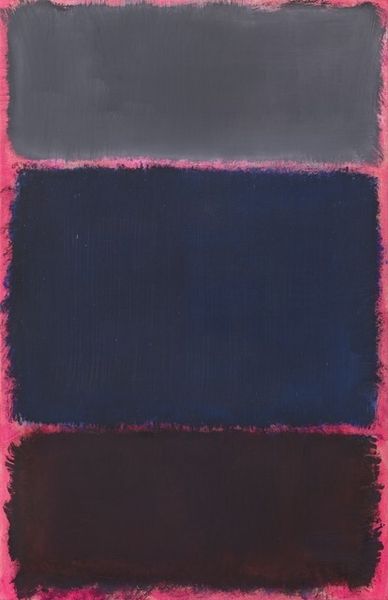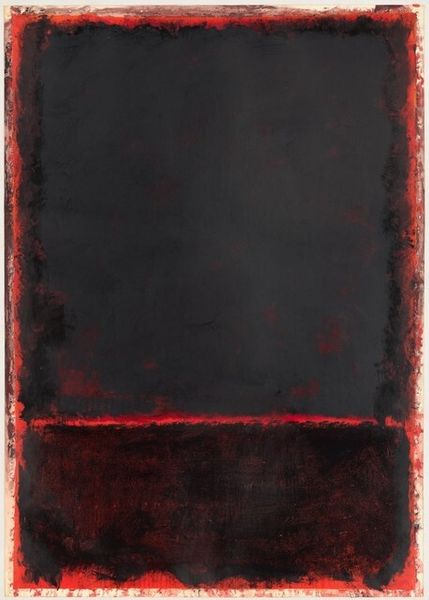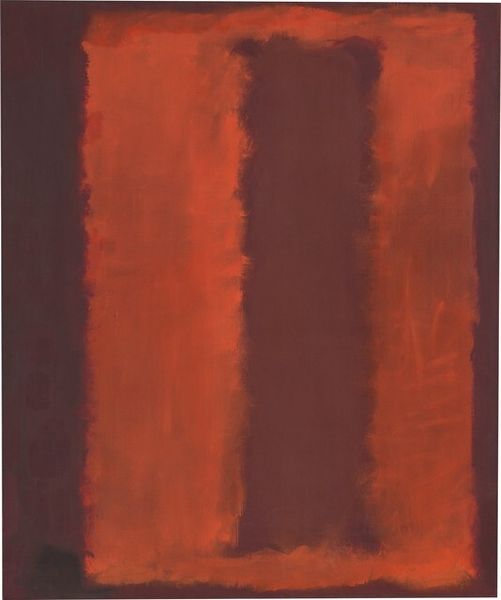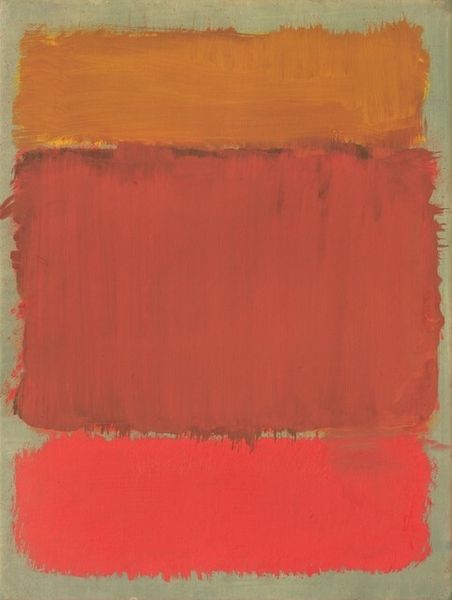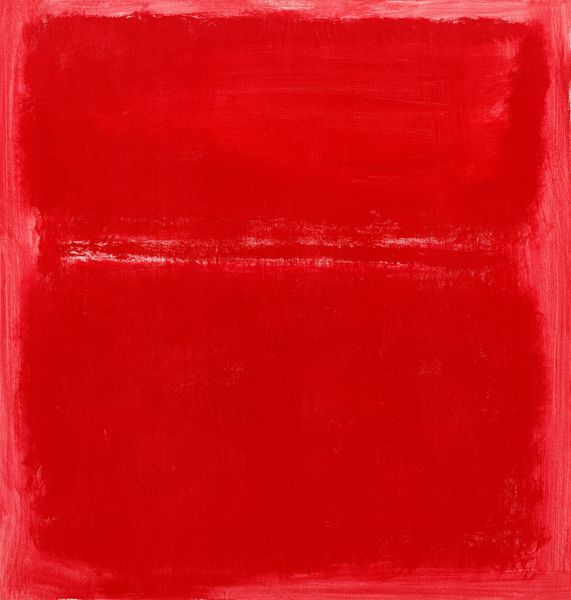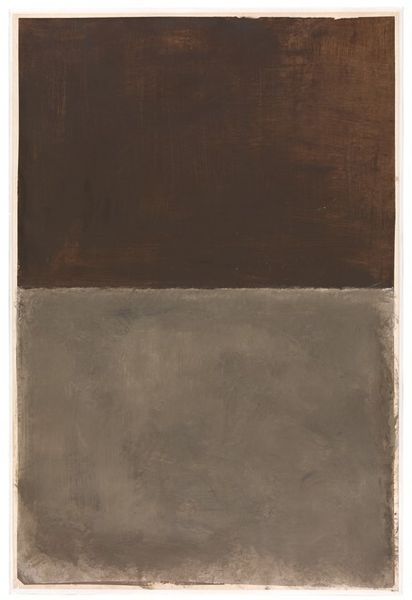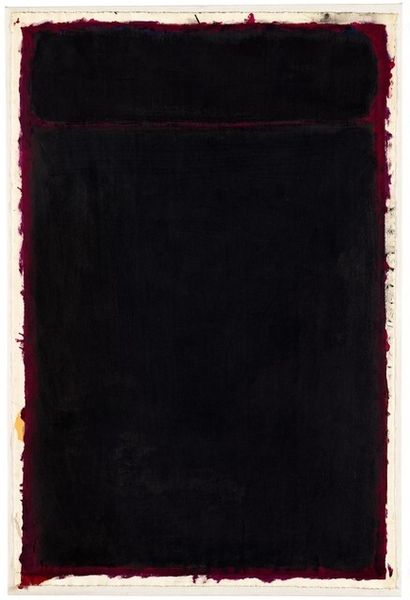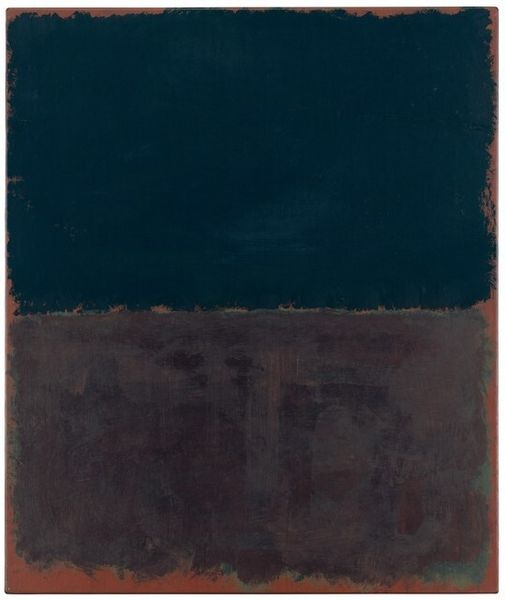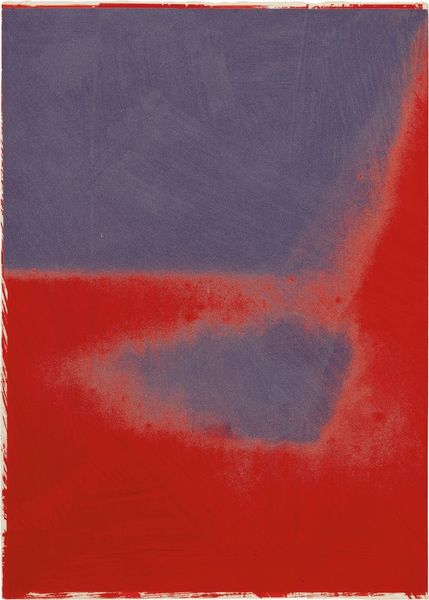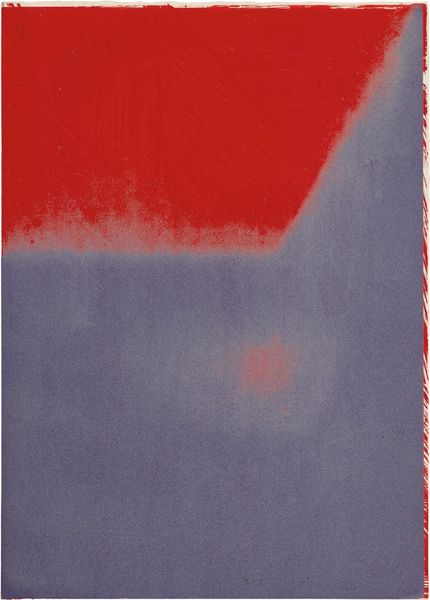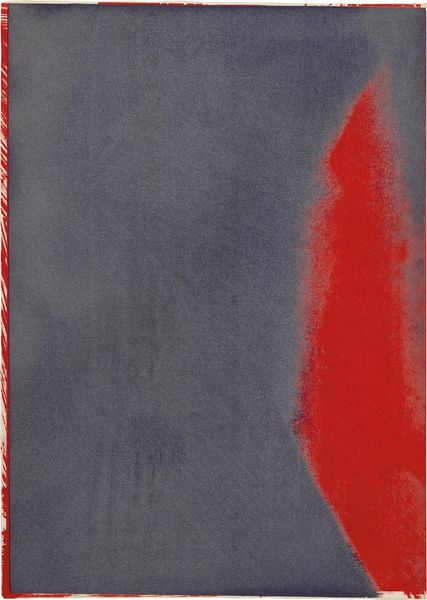
painting, oil-paint
#
abstract-expressionism
#
abstract expressionism
#
non-objective-art
#
painting
#
oil-paint
#
colour-field-painting
#
geometric
#
abstraction
#
abstract art
#
modernism
Dimensions: overall: 76.4 × 55.9 cm (30 1/16 × 22 in.)
Copyright: National Gallery of Art: CC0 1.0
Curator: We're looking at a classic example of late Rothko, simply titled "Untitled," from 1967, rendered in oil paint. What are your initial impressions? Editor: Somber, undoubtedly. The scale feels monumental even in reproduction. It’s dominated by these muted, grey rectangles that appear to float against a ground of deep crimson. There's an undeniable weight to it. Curator: Yes, Rothko's exploration of color and form here moves beyond mere aesthetics. Consider the composition: the rectangles aren't sharply defined, but bleed into each other, creating a sense of depth and, dare I say, the sublime. Editor: Absolutely, and that "bleed" is critical. You can almost see the physical process—the layers upon layers of oil, the scraping and feathering of the edges. I wonder about the specific pigments used, their availability at the time... It invites a more grounded investigation into the means of its construction. Curator: Certainly. He was known to mix his paints himself, carefully selecting pigments. But for Rothko, these formal elements were vehicles for expressing fundamental human emotions: tragedy, ecstasy, doom. Note the contrast between the warm and cool tones; this dichotomy is everything. Editor: The color relationships contribute much of the affect. The clashing, perhaps uncomfortable juxtaposition, hints at a tension—a struggle with the act of making itself, the constant push and pull. We are witness to both production and creation. Curator: Precisely. And through that struggle, we are confronted with our own mortality. Rothko masterfully evokes a sense of existential angst using remarkably reductive means. Editor: An angst undeniably shaped by its historical moment. This piece was made at the cusp of the Vietnam War—anxiety made physical and made lasting through the materiality and the intentional production. Curator: A lasting sentiment indeed. Seeing through its materials perhaps bring us closer to what lies beyond and within the artwork. Editor: Understanding the material world and it relation with the final aesthetic. Thank you.
Comments
No comments
Be the first to comment and join the conversation on the ultimate creative platform.
